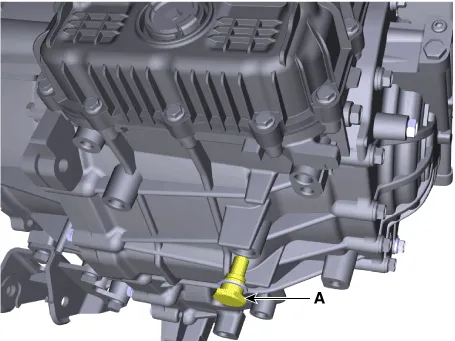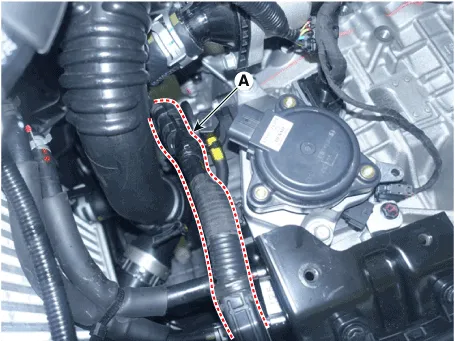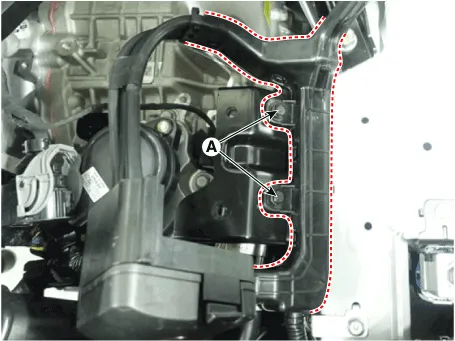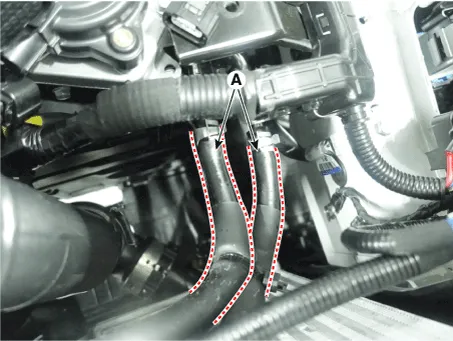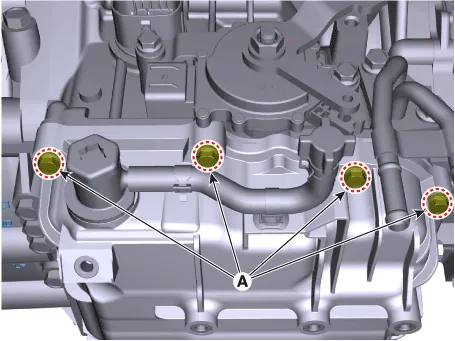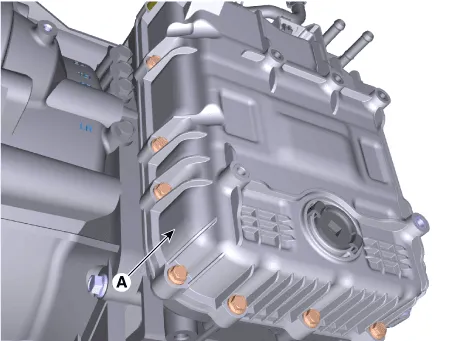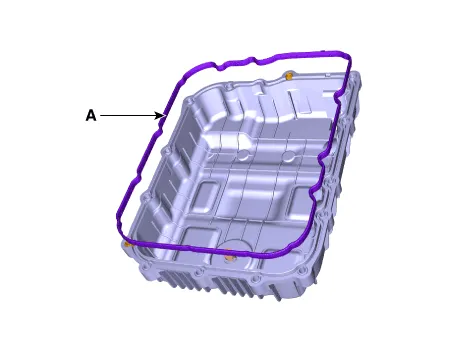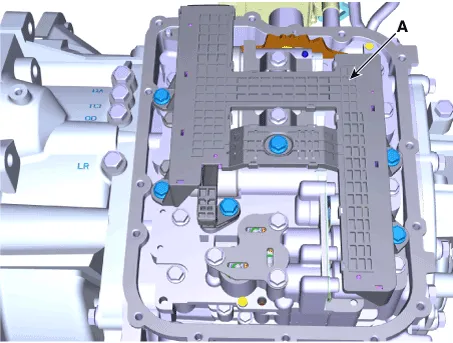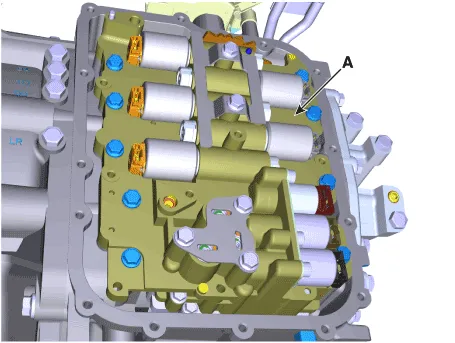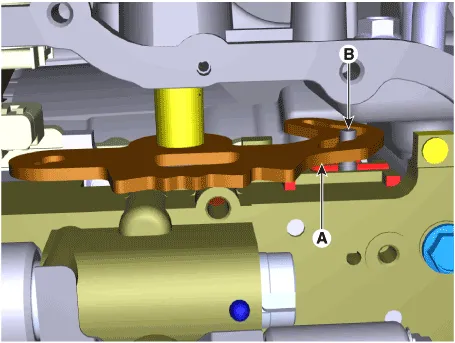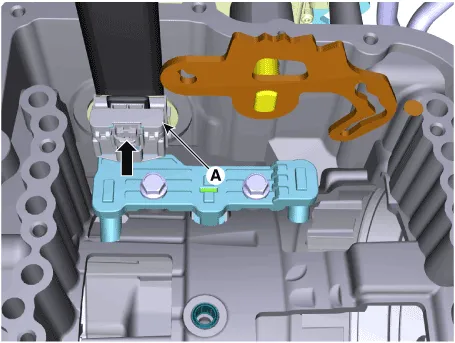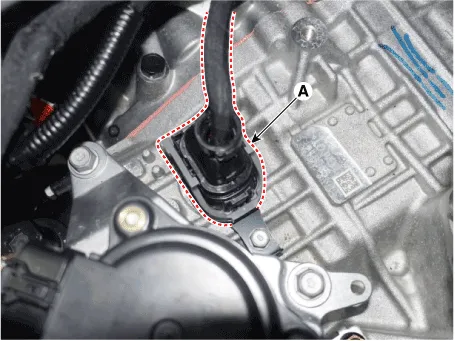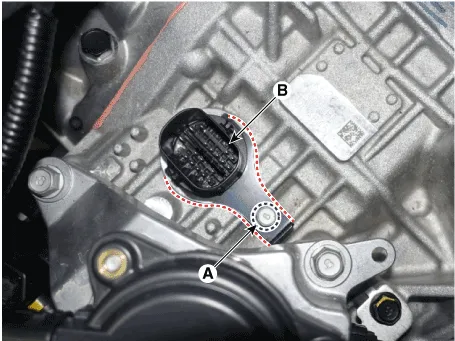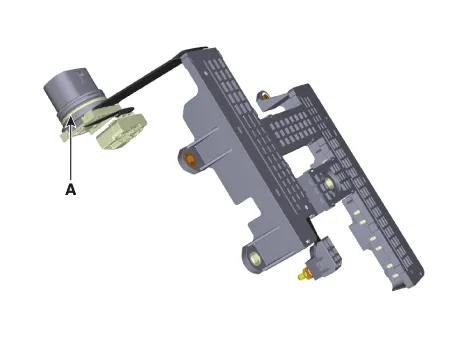Hyundai Palisade (LX2): Automatic Transaxle Control System / Oil Temperature Sensor (Main Harness)
Specifications
| Specification |
|
Temp [(°C)°F] |
Resistance (kΩ) |
|
(-40) -40 |
48.1 |
|
(-20) -4.0 |
15.6 |
|
(0) 32.0 |
5.88 |
|
(20) 68.0 |
2.51 |
|
(40) 104.0 |
1.120 |
|
(60) 140.0 |
0.612 |
|
(80) 176.0 |
0.329 |
|
(100) 212.0 |
0.186 |
|
(120) 248.0 |
0.109 |
|
(140) 284.0 |
0.067 |
|
(150) 302.0 |
0.053 |
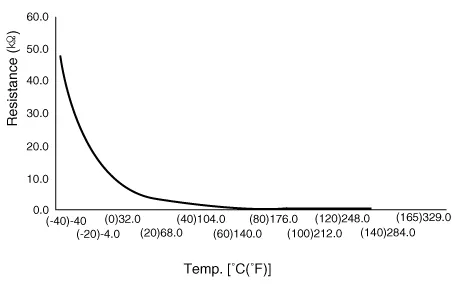
Description and operation
| Description |
| • |
The sensor used is a thermistor (NTC) in which resistance changes with
temperature variation.
|
| • |
Transmission oil temperature sensor monitors the automatic transmission
fluid's temperature and conveys the readings to TCM.
|
| • |
When the TCM supplies about 5 V of power to sensor, the sensor output
value changes depending on ATF temperature.
|
| • |
It is an NTC (Negative Thermal Coefficient) sensor whose resistance
has an inversely proportional relationship with the temperature level.Data
produced by this sensor is used to identify damper clutch activation
and deactivation zones within the low temperature and high temperature
range and to perform hydraulic amendment control during gear changes.
|
| • |
Oil temperature sensor is installed on the valve body and is integrated
with main harness.
|
Schematic diagrams
| Circuit Diagram |
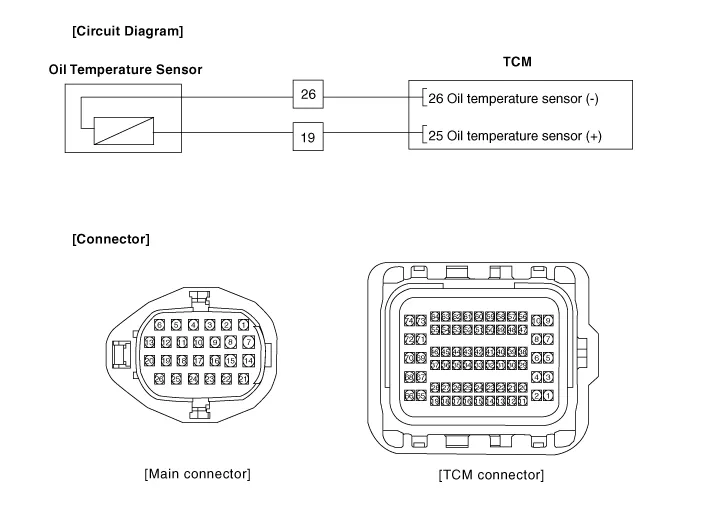
Repair procedures
| Inspection |
|
| Removal |
|
| 1. |
Turn ignition switch OFF and disconnect the negative (-) battery cable.
|
| 2. |
Remove the battery and battery tray.
(Refer to Engine Electrical System - "Battery")
|
| 3. |
Remove the air duct and air cleaner assembly.
(Refer to Engine Mechanical System - "Air Cleaner")
|
| 4. |
Remove the under cover.
(Refer to Engine Mechanical System - "Engine Room Under Cover")
|
| 5. |
Drain the coolant.(If equipped ATF warmer)
(Refer to Engine Mechanical System - "Coolant")
|
| 6. |
Loosen the drain plug (A) and reinstall the drain plug after draining
ATF totally.
|
| 7. |
Loosen the fixing bolt (A) and then removing the bracket.
|
| 8. |
Loosen the fixing bolts (A) and then removing the bracket.
|
| 9. |
Separate the ATF cooler hose (A).
|
| 10. |
Loosen the upper bolts (A) of the valve body cover.
|
| 11. |
Loosen the bolts and then removing the valve body cover (A).
|
| 12. |
Loosen the bolts and then separate the main harness (A).
|
| 13. |
Loosen the bolts and then removing the valve body assembly (A).
|
| 14. |
Disconnect the speed sensor connector (A).
|
| 15. |
Disconnect the main connector (A).
|
| 16. |
Loosen the bolt and then removing the fixing of clip (A).
|
| 17. |
Remove the main connector (B) by pushing it downward.
|
| Installation |
| 1. |
To install, reverse the removal procedure.
|
| 2. |
Inject the automatic transaxle oil and inspect the oil level.
(Refer to Automatic Transaxle System - "Automatic Transaxle Fluid")
|
Description and operation Description Controls the 4 position of P(Parking), R, N, D using the rotation of the motor of according to the electric signal when the shift button is operated.
Specifications Specification ▷Type : Hall effect sensor Item Specification Operating condition (°C)°F (-40 to 150) -40 to 302 Output voltage (V) High 1.
Other information:
Hyundai Palisade (LX2) 2020-2026 Service Manual: Components and positions
Hyundai Palisade (LX2) 2020-2026 Service Manual: Auto Defogging Sensor
Description and operation Description The auto defogging sensor is installed on the front window glass. The sensor judges and sends signal if moisture occurs to blow out wind for defogging. The air conditioner control module receives signal from the sensor and restrains moisture and eliminate defog by controlling the intak
Categories
- Manuals Home
- Hyundai Palisade Owners Manual
- Hyundai Palisade Service Manual
- Engine Mechanical System
- System Setting and Operation
- Emergency liftgate safety release
- New on site
- Most important about car




